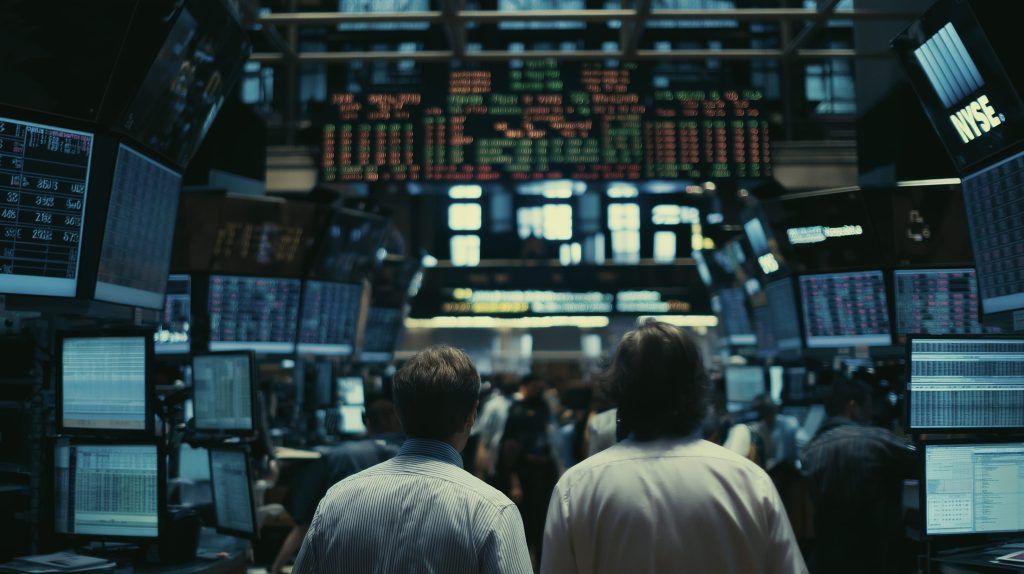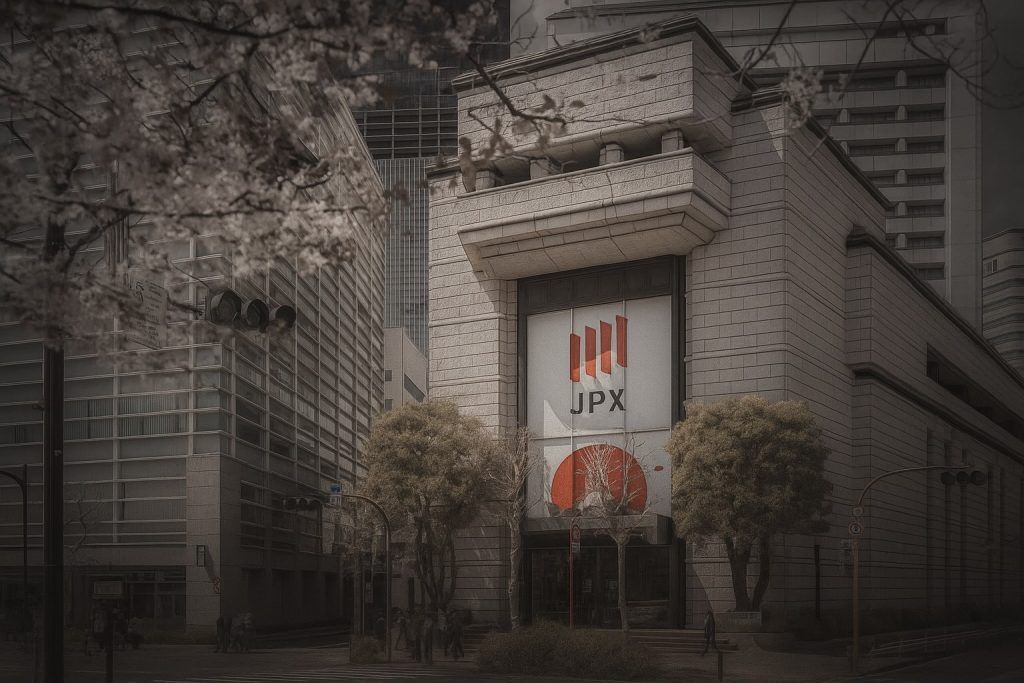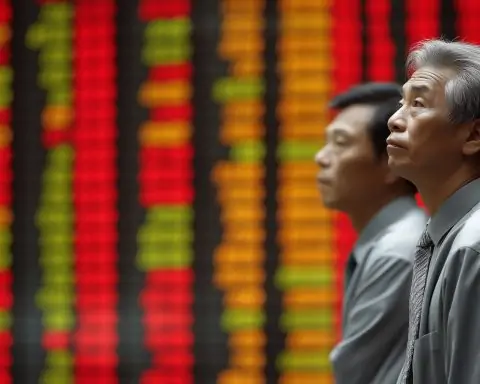China’s stock markets charged higher on Thursday, November 13, 2025, with the Shanghai Composite Index closing at its highest level in a decade and Hong Kong’s Hang Seng Index reclaiming the 27,000 mark. Gains were led by new energy, EV battery makers, and AI-related tech giants, even as fresh data showed credit growth weakening and questions swirled around the future of China’s top markets regulator. [1]
Investors largely shrugged off those macro concerns, focusing instead on policy support for green industries, upbeat Chinese tech headlines, and the positive global mood after the end of the record U.S. government shutdown. [2]
Key Index Moves at the Close
Mainland China
- Shanghai Composite: up about 0.7% to around 4,029 points, its highest level since 2015, extending the market’s break above the psychologically important 4,000 level. [3]
- Shenzhen Component: gained roughly 1.8% to about 13,476 points. [4]
- ChiNext (growth board): climbed about 2.6% to around 3,201, outpacing the broader market as investors rotated back into high‑growth names. [5]
- CSI 300 (blue-chip index): rose about 1.2% to 4,702.07 points, marking a solid rebound after earlier profit‑taking. [6]
Turnover on the Shanghai and Shenzhen exchanges exceeded 2.04 trillion yuan, up from around 1.95 trillion yuan in the previous session – a sign that buyers are leaning back into equities rather than treating the recent rally as a brief blip. [7]
Hong Kong
- Hang Seng Index (HSI): +0.56% to 27,073.03, closing more than 150 points higher and reversing early losses. [8]
- Hang Seng China Enterprises Index (HSCEI): +0.63% to about 9,599. [9]
- Hang Seng Tech Index: +0.8% to around 5,981, supported by big‑ticket Chinese tech names. [10]
Strategists also pointed out that Hong Kong’s advance remained underpinned by property and financial stocks, as regional investors rotated into more cyclical and value‑oriented sectors while watching global interest‑rate signals. [11]
Mainland China: Shanghai’s Decade High Driven by New Energy Boom
New Energy Vehicles and Batteries Steal the Show
The standout story on the mainland was the explosive strength in new energy and EV-related shares:
- The CSI New Energy Vehicle Index jumped about 6%+, hitting a three‑year high.
- A broader New Energy Index rallied nearly 5%, on track for its biggest single‑day gain in roughly two weeks. [12]
- CATL, the EV battery giant, surged around 7–8%, trading near record highs last seen in October.
- Tianqi Lithium, a key lithium producer, jumped close to 10%, extending gains after a series of upbeat profit and corporate news items in recent weeks. [13]
This buying frenzy followed comments from a senior official at the Ministry of Industry and Information Technology (MIIT), who said Beijing will roll out a comprehensive plan to boost the new energy battery sector and its supporting infrastructure. Investors read that as a fresh policy green light for a sector already central to China’s industrial strategy. [14]
With lithium prices having stabilized after last year’s slump and global EV adoption still rising, traders are increasingly treating new energy and battery plays as long‑term structural winners rather than short‑term policy trades.
Broader Sector Moves and Market Breadth
Beyond EV and batteries:
- Chemicals, ceramics and non‑ferrous metals stocks were among the biggest gainers on the mainland.
- Textile machinery and electric power shares lagged, with some profit‑taking after a strong run. [15]
The combination of rising turnover and wide‑ranging sector participation suggests improving market breadth, a key hallmark of healthier rallies compared to narrow tech‑only surges.
Analysts at Yingda Securities said they expect the market to consolidate around the 4,000‑point level in the near term, building a stronger base for further upside if upcoming data and policy support cooperate. [16]
Tech & AI: Baidu, Tencent and Alibaba Add Momentum
A Gentle Rebound in Onshore AI and Chips
Onshore AI and semiconductor names also joined Thursday’s advance, though in a more measured way than new energy:
- Indices tracking artificial intelligence and chipmakers rose about 0.6% and 0.7%, respectively, clawing back some of this week’s declines. [17]
Their move coincided with Baidu unveiling new AI processors and supercomputing products, reinforcing the message that China’s tech giants are accelerating domestic hardware and cloud AI capabilities despite ongoing export controls. [18]
Hong Kong Tech: Alibaba’s AI Push and Tencent’s Earnings
In Hong Kong, the Hang Seng Tech Index’s rise was underpinned by heavyweight names:
- Alibaba shares rallied roughly 3%+ after reports that the company is preparing a major revamp of its flagship mobile AI app, rebranding “Tongyi” as “Qwen” and transforming it into a ChatGPT‑style AI agent tightly integrated with Taobao shopping. [19]
- The upgrade, which dedicates over 100 developers to Qwen and initially keeps the product free to build scale, was widely interpreted as a high‑stakes consumer AI push that could deepen user engagement and eventually open new monetization channels. [20]
Investors also digested Tencent’s latest results, which showed revenue growing about 15% year‑on‑year, powered by gaming and early AI‑related services. While the earnings beat was already anticipated by some, it helped reinforce the view that China’s platform tech giants are past the worst of the regulatory crackdown and are back in growth mode. [21]
Taken together, these developments bolstered sentiment in China’s AI ecosystem at the same time as new energy names lit up the onshore tape.
Hong Kong: Hang Seng Reclaims 27,000 as Early Losses Reverse
The Hang Seng Index opened weaker, with midday updates showing the benchmark down around 0.5%, but buyers stepped in during the afternoon, helping the index finish up 0.56% at 27,073.03 points. [22]
Key elements of the Hong Kong session included:
- Tech leaders such as Alibaba rebounding on AI news, supporting the Hang Seng Tech Index. [23]
- Financials and property developers remaining a key pillar of the rally, as highlighted by regional market commentary that emphasized rotation into banks and real‑asset plays amid shifting rate‑cut expectations. [24]
- Continued optimism that Hong Kong can leverage its exchange and funds platform to channel capital into mainland new‑economy names, especially as cross‑border links deepen and local initiatives such as tokenised‑deposit pilots aim to modernize its financial infrastructure. [25]
For now, 27,000 is acting as a near‑term barometer of risk appetite: holding above that level would reinforce the sense that October’s breakout has legs, while a decisive break back below could signal consolidation or fatigue after a strong run.
Macro Backdrop: Weak Credit Data, Big Data Day Ahead
The rally unfolded against a much less rosy backdrop in the credit and macro data.
October Lending Slumps
Fresh figures released Thursday showed that:
- New bank loans in October plunged to about 220 billion yuan, far below September’s 1.29 trillion yuan and well short of consensus expectations around 500 billion yuan.
- Growth in outstanding loans slowed to roughly 6.5% year‑on‑year, the weakest pace on record.
- A broader gauge of credit, total social financing (TSF), also cooled, underscoring subdued demand for credit among households and companies. [26]
Despite recent policy tools — including subsidised consumer loans and specialised lending facilities — the data highlight the ongoing struggle to revive private‑sector confidence and household borrowing.
The People’s Bank of China (PBOC) reiterated its commitment to keeping liquidity “reasonably ample” and improving policy transmission, but markets are increasingly aware that monetary tools alone may not be enough without stronger fiscal and structural measures. [27]
Friday’s Data in Focus
Traders are now laser‑focused on Friday’s batch of October indicators, including:
- Retail sales
- Industrial output
- Fixed‑asset investment
These releases will offer a clearer view on whether the recent equity market surge is running ahead of the real economy, or whether activity is finally catching up. Multiple reports today explicitly noted that investors are positioning ahead of these prints, especially in sectors that would benefit from stronger domestic demand. [28]
Regulatory Wildcard: CSRC Chief Wu Qing and Leadership Uncertainty
Adding a layer of intrigue to today’s market action, Reuters reported that Wu Qing, chairman of the China Securities Regulatory Commission (CSRC), has sought approval to step down, citing health reasons. [29]
Key points from that story and follow‑ups:
- Wu took over in early 2024 during a brutal multi‑year slump in Chinese equities and quickly gained a reputation for forceful interventions and market‑stabilisation measures. Under his watch, the Shanghai Composite has rebounded roughly 45% from its lows, helping restore some investor confidence. [30]
- He has long been known as the “broker butcher” for tough crackdowns during his earlier regulatory career — a stance many market participants saw as painful but ultimately credibility‑enhancing. [31]
- Shortly after resignation reports surfaced, the CSRC publicised photos and statements showing Wu on trips to France and Brazil, a move widely interpreted as an attempt to calm speculation and avoid spooking markets. [32]
For now, investors are treating the situation as a watch‑and‑wait story rather than an immediate sell signal. But any confirmed leadership change at the CSRC could influence:
- The pace of market‑support measures
- The direction of capital‑market reform (e.g., IPO rules, leverage, trading curbs)
- International perceptions of China’s regulatory stability
Given how central regulatory confidence has been to the current rally, this is a key risk worth monitoring alongside macro data.
Global Context: U.S. Shutdown Ends, Dollar Softens, Risk Assets Rotate
Chinese markets also traded within a broader global narrative:
- The end of the record 43‑day U.S. government shutdown, after President Trump signed funding legislation, removed a major overhang for global risk assets — even if U.S. data will remain patchy for a while due to the disruption. [33]
- U.S. equities turned lower later in the day as investors reassessed odds of a December Fed rate cut, but Asia‑Pacific bourses mostly opened higher, with Google Finance data showing gains across Shanghai, Hong Kong and Japan earlier in the session. [34]
- The yen slid to a record low versus the euro after Japan’s new prime minister signalled a preference for gradual rate hikes, encouraging carry trades and supporting risk sentiment in the region. [35]
Against that backdrop, China’s outperformance — with Shanghai at a decade high — stands out, reinforcing the narrative that investors are rotating toward select emerging markets where valuations, policy support and structural themes (like green tech and AI) look compelling. [36]
What Today’s Session Signals for Investors
Here are the key takeaways from China’s stock market action on November 13, 2025:
- 4,000 Is Becoming a Battleground Level for Shanghai
- The market’s ability to hold and build above 4,000 — now with a fresh decade high — suggests institutional buying rather than only retail-driven momentum. Analysts expect some sideways consolidation around this level, but see that process as healthy base‑building rather than a reversal. [37]
- Policy‑Backed Structural Themes Dominate: New Energy + AI
- Today’s flows confirm that EVs, batteries, renewables, and AI/semiconductors remain core conviction trades for both domestic and foreign investors. As long as MIIT and other agencies continue signalling support, these sectors are likely to stay in focus — albeit with higher volatility after such big moves. [38]
- Macro Data and Credit Are the Main Near‑Term Risks
- The sharp drop in October lending underlines that China’s real economy is not yet as strong as the equity charts look, which raises the risk of disappointment if Friday’s data are weak. That said, bad data could also fuel expectations of additional policy easing or targeted fiscal support. [39]
- Regulatory Headlines Bear Watching but Aren’t Derailing Sentiment—Yet
- Rumours about Wu Qing stepping down are a reminder that personnel changes can matter for markets, especially in a system where policy is highly centralised. For now, the market reaction has been muted, but any confirmation of a successor — and that person’s perceived stance — will be critical. [40]
- Hong Kong Still Leverages China’s Story — With Its Own Catalysts
- The Hang Seng’s climb above 27,000, combined with strong contributions from tech, property and financials, suggests international money is not done with Hong Kong as a gateway to China’s new‑economy rally and as a beneficiary of improved global risk appetite post‑shutdown. [41]
What to Watch Next
For readers tracking China’s stock market beyond today:
- Friday, November 14, 2025: October retail sales, industrial production and fixed‑asset investment data.
- Follow‑through details on MIIT’s new energy battery plan, including potential subsidy structures or infrastructure mandates. [42]
- Any official confirmation or denial regarding Wu Qing’s status at the CSRC. [43]
- Ongoing earnings and AI announcements from Alibaba, Tencent, Baidu and other tech heavyweights, which are increasingly central to sentiment in both mainland and Hong Kong markets. [44]
References
1. gbcode.rthk.hk, 2. www.brecorder.com, 3. gbcode.rthk.hk, 4. gbcode.rthk.hk, 5. gbcode.rthk.hk, 6. www.investing.com, 7. gbcode.rthk.hk, 8. www.chinadailyasia.com, 9. www.chinadailyasia.com, 10. www.chinadailyasia.com, 11. www.home.saxo, 12. gbcode.rthk.hk, 13. gbcode.rthk.hk, 14. gbcode.rthk.hk, 15. gbcode.rthk.hk, 16. gbcode.rthk.hk, 17. gbcode.rthk.hk, 18. www.thestandard.com.hk, 19. gbcode.rthk.hk, 20. www.indexbox.io, 21. www.bloomberg.com, 22. www.thestandard.com.hk, 23. gbcode.rthk.hk, 24. www.home.saxo, 25. www.thestandard.com.hk, 26. www.reuters.com, 27. www.reuters.com, 28. www.brecorder.com, 29. www.reuters.com, 30. www.reuters.com, 31. www.reuters.com, 32. www.thestandard.com.hk, 33. www.reuters.com, 34. www.google.com, 35. bilyonaryo.com, 36. tradingeconomics.com, 37. gbcode.rthk.hk, 38. gbcode.rthk.hk, 39. www.reuters.com, 40. www.reuters.com, 41. www.chinadailyasia.com, 42. gbcode.rthk.hk, 43. www.reuters.com, 44. www.thestandard.com.hk










